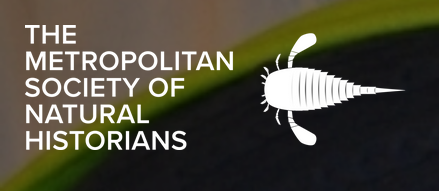On Saturday, December 2, paleontologist Danny Barta met with the MSNH at the American Museum of Natural History (AMNH) to discuss recent findings in the world of paleobiology, as well as showing off the wonderful dinosaur specimens, which the AMNH houses. Our first specimen, and by far the largest, was the newly named titanosaur, Patagotitan mayorum, an individual so big, that its head, dangling on an outrageously long neck, is sticking out of the exhibition hall. Barta pointed out that the giant’s toes can only be found on his hindlegs (possibly to dig nests), that its neck vertebra contains complex struts to house air sacks, and that it might not have been much older than 15 years old! That’s what we call a growth spurt!
We moved on to see the ancestors of crocodilians, which were possibly warm-blooded and faster moving than their descendants, and saw that pterosaur (which are not dinosaurs!) wings developed by elongation of the fourth finger, connected to the body by skin. This is unlike any other flying vertebrate, in which wings are either formed by feathers (birds), or through an expansion of all fingers, with the skin in between (bats). Either way, after seeing a fossilized dinosaur resting on a nest of eggs as well as an embryonic skeleton, we moved on to the hall of Saurischian dinosaurs, which are defined by their hip structure. Here, we learned about the long-necked sauropods (and the recent resurrection of the genus Brontosaurus), as well as the three-toed theropods, which include Tyrannosaurus rex, Velociraptor, and our feathered friends, the birds, which also belong to this group of dinosaurs. Turns out Jurassic Park got it all wrong: T. rex could not run faster than 10-15 miles an hour (but it still would be able to catch you if you would have tried to run away, “unless you are a sprinter”), and Velociraptor was much smaller than depicted in the book and movie.
Finally, we went to the hall of Ornithischian dinosaurs, all of which had a predentary bone on the lower mandible to which a keratin beak attached. Beaked dinosaurs? Yes, they were, and plenty of them: Triceratops, Stegosaurs, and the duck-billed dinosaur mummy (with fossilized skin) were only a few of the marvelous specimens we saw in this hall. Barta showed us the different life stages of Psittacosaurus, and explained the differences between Triceratops (large frills, long horns over the eyes,) and Styracosaurus (short frills, short horns over the eyes), discussed how ankylosaurs defended themselves with armor, and told us that the function of the dorsal plates on stegosaurs are still unclear (it might have nothing to do with thermoregulation, but possibly evolved for display).
The tour ended with a bang: 65 million years ago, a meteorite crashed into the area of today’s Cancun and put an end to all this dinosaur nonsense, with one exception: the birds. Still among us, and with plenty of astonishing species, they remind us of the amazing evolutionary journey dinosaurs underwent since 240 mya.
We thank Danny Barta, for making this such a pleasant and informative visit, and good luck with your Ph.D. defense in summer 2018!
To view more photos from this event, visit our gallery. All photo credit goes to Maurice Chen.
Danny Barta is a Ph.D. candidate in comparative biology at the Richard Gilder Graduate School of the American Museum of Natural History. He grew up in Helena, Montana, and holds a masters degree in earth sciences from Montana State University. Broadly, he is interested in vertebrate reproduction, growth, and development. His doctoral research focuses on the post-hatching growth and development of basal theropod and ornithischian dinosaurs. The exceptional collections available at the American Museum of Natural History provide important insight into dinosaur growth rates and anatomical changes during development. He also has conducted fieldwork in the western United States, China, and Mongolia.
Recommended Additional Resources
The University of California (Berkeley) Museum of Paleontology’s Online Exhibits


